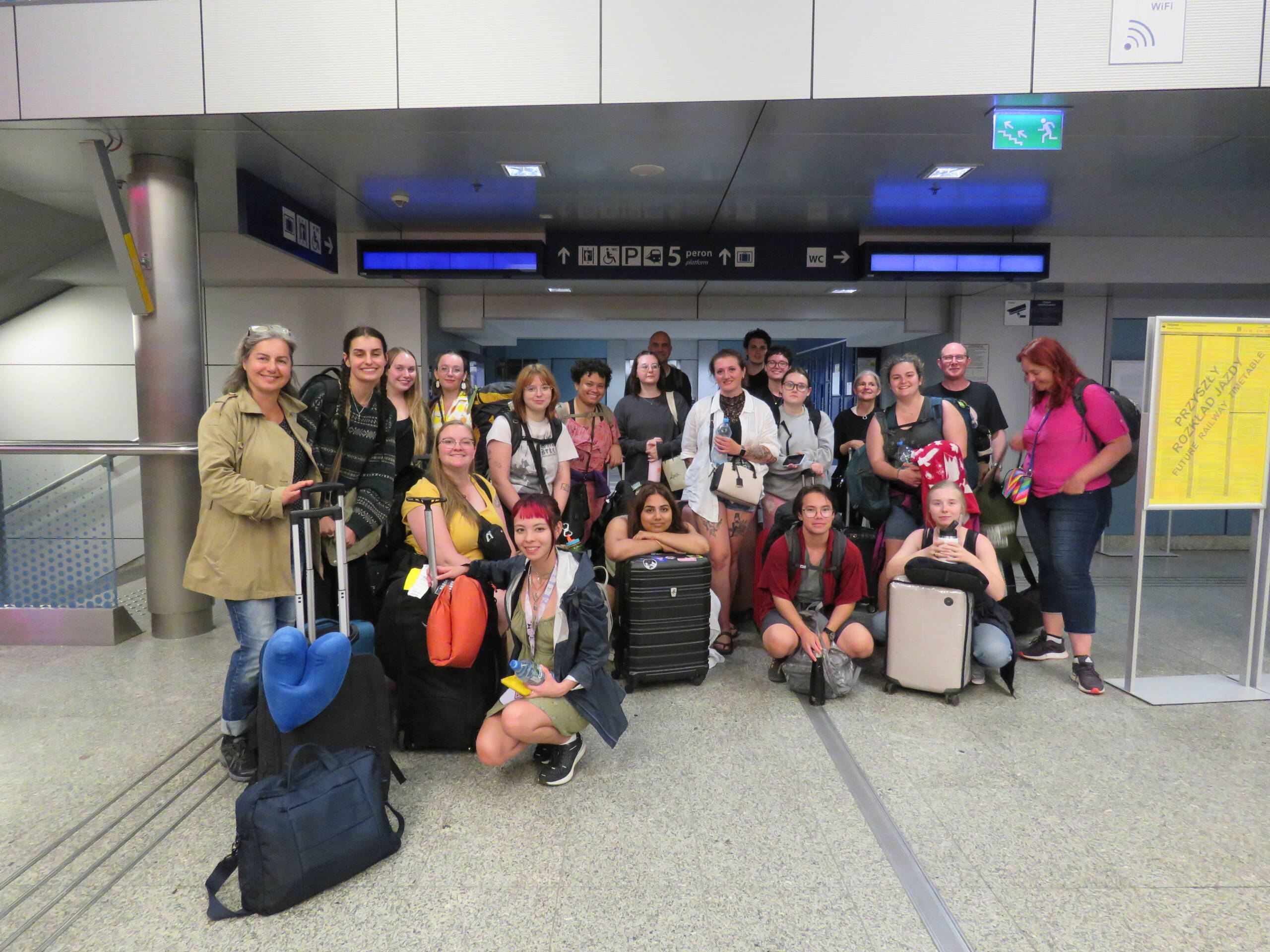Memory on the Border – Loibl Tunnel
Over the course of the Memory politics study tour, it became clear that how World War II and the Holocaust are commemorated is a complex issue both within and outside of the European Union. A striking example of this complexity is visible in the differences between how Austria and Slovenia have commemorated the events that took place at the Loibl hard labour camps. A former site camp of Mauthausen, Loibl was established in June 1943 in a wooded area surrounded by vast mountains. Although small in scale existing both within the Austrian (Loibl North) and Slovenian borders (Loibl South), these camps were sites of extreme brutality. Both camps were used to hold laborers supplied by Mauthausen’s main camp forced to construct the Loibl tunnel.
On the Austrian side after the end of the war, Loibl North saw the forest take over the lands, with memorials only starting to appear in 1995. Although the lack of memorials at the site can clearly be attributed to the Austrian government, the lands were also private and owned by a family who had previously leased the lands to the Nazis. Finally in 2008 the Austrian Ministry of the Interior, under a great deal of pressure since the 1990s, leased the grounds of the former camp.
Despite being able to finally work to uncover the ruins and evidence of the past, the project received minimal funding. Students from highschool participated in the excavation process and aided in the recovery of the site that we see today. Since 2015, The Mauthausen Memorial in cooperation with Carinthia, the Bundesdenkmalamt Kärnten and the MKÖ Kärnten/Koroška have been working on a visualization project that currently has steel beams and posts erected to outline the frameworks of former barracks.[1] Although the site has seen progress over the years, a great deal of work needs to be done at the former site.
In contrast to the North, Loibl South provides an entirely different memorial experience. Shortly after departing from the memorial at Loibl North, our instructor Janine Wulz took us through the Loibl tunnel to reach Slovenia. Immediately our eyes became fixated on a mammoth of a monument on the left side of the road, and visually stimulating signage on the right. Before engaging with the large monument, Janine led our group towards the signage surrounded by large trees, and situated within the mountains. Passing through the greenery, we discovered that the trees had been planted in place of the fences and watch towers that had once enclosed the camp’s victims, which brought to mind the question of how landscapes of memory, especially sites of atrocity, should be maintained. Within the tree walls, we discovered a well groomed lawn and concrete structures within the ground that have been maintained to honor the victims of the camp and fascism.
While it was easy to get lost within the natural beauty of the mountains and greenery, I was also acutely aware of how the landscape would have played a critical role for the partisans in the fight against the Nazis. Unlike Loibl North, the former Yugoslav government acknowledged the camp and created a memorial in the summer of 1954. It is clear that the differences between Loibl North and South reflect the differences in which former Yugoslavia, today Slovenia, and Austria chose to understand and memorialize their past during World War II. Key to the memory politics for Yugoslavia was the role of the communist partisans and the defeat of antifascism, whereas Austria utilized a well maintained myth that it had been the first victim of the Third Reich.
What is interesting for students of memory politics is how on the surface the differences in commemoration appear to create the image that communist Yugoslavia, and now Slovenia, have paid “proper” attention to the victims of the camp. I would argue that despite the failures of the Austrian government to commemorate what happened at Loibl in a timely and appropriate manner, attention should also be directed to what the motives were behind commemorating a site that was in close proximity to the widely celebrated partisans, and the prisoners who were able to escape Loibl and join the partisan movement. Although this position could be seen as controversial, I believe that as students of memory it is critical that we ask the tough questions, including why the former communist government would wish to commemorate sites in close connection to the partisan movement.
Looking beyond the example of commemoration of Loibl North and South, we are left with the even broader question of what it means to commemorate antifascism and establish the memory of WWII around the victors who fought against fascism today. While there is absolutely no doubt that we should celebrate victory over the Nazi’s and their fascist allies, there is perhaps a greater issue at stake if we consider how the memory of the fight against fascism is being utilized as a tool of war on the international stage today. For this exact reason, we need to dig deeper and go beyond the eye catching aesthetics of memory and consider the underlying narrative that exists in a state’s memory politics. Furthermore, we need to be aware of how narratives about the past shape our present.
Alicia Ward is currently a MA student at the University of Victoria in the department of Germanic and Slavic studies under the supervision of Dr. Serhy Yekelchyk. Her thesis examines the politics of Holocaust memorialization in Ukraine. Alicia received a BA in History from the University of Victoria.
[1] For more information please see the attached link https://www.mauthausen-memorial.org/en/Loibl.










